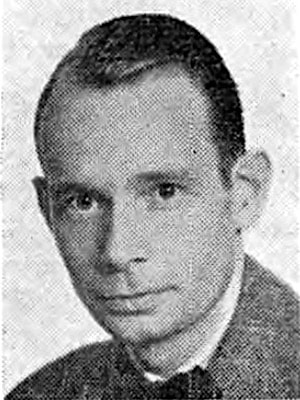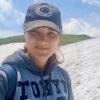Claus Bang

Claus Bang (1924-1970) was a Danish physician
Bang was the innovator behind the Bang Respirator which was used widely in Denmark during the Polio Epidemic.
It was Bang’s answer to medical student shortages in Skive, who were often tasked with manually operating IPPV. Bang’s Respirator was one of the first of its kind to incorporate an electrically heated humidifier although this innovation was not fully appreciated at the time.
A disinterest in the technical details of the project, once the design was outlined, saw Bang withdraw his involvement which was carried on by the company Bang and Olufsen (who bear no relation to Bang). The Bang Respirator enjoyed only a brief period of use over 3-5years and largely within Danish Hospitals. Abroad, it made its way to Norway, France and Argentina
Biography
- Born on January 15, 1924 in Kobenhavn, Denmark
- 1952 – the method of IPPV is introduced in Skive. A lack of medical students sees a water manometer introduced into the ventilatory system so that inexperienced personnel can be taught to ventilate manually. Bang recognises the possibility of constructing a respirator by using the rise and fall of fluid in the manometer to drive an electric valve which would drive the flow of air in the ventilator from source of compressed gas.
- Bang collaborates with technicians N.H Nielsen and Kaj Nielsen from the Radio factory Bang and Olufsen and produce three prototypes of the respirator. These are used in Skive and Copenhagen
- 1953 – Reports his invention in The Lancet in his article ‘A new respirator’ where it is dubbed ‘The Claus Bang Respirator.’ It is also referred to as ‘Skive Student’ as it was Skive’s answer to the Copenhagen system for using students to perform IPPV
- A disinterest in the technical details of the project sees Bang hand over the rights for production and marketing of his ventilator to the company Bang and Olufsen
- 1954 – the respirator is altered by company engineer E. Roorbaek Madsen to incorporate a negative pressure setting; a heated humidifier is later equipped which is a novel innovation unfortunately not fully appreciated by the medical community at the time
- 1955 – after production of approximately 100 models, economic stressors and the need to address faulty components of the respirator, Bang and Olufsen abandon further production of the Bang Respirator
- 1965 – Bang moves to Aarhaus as a General Practitioner
- Died on April 10, 1970 in Højbjerg, Arhus, Denmark
Medical Eponyms
The Bang respirator
1952 was considered the era of continuous IPPV in Copenhagen during the Polio epidemic. IPPV at the time was manually administered by medical students; a technique that gradually made its way to Skive where Dr Claus Bang and Niels Heilskov worked. A shortage of medical students and the need to train inexperienced personnel, saw Bang design and develop the Bang Respirator.
The respirator comprises two vertical tubes which act as a manometer when filled with fluid, an electrically controlled valve, a rubber bladder, a source of compressed gas and an electrode to control opening/closing of the circuit.

Mechanism of action
When the fluid in the vertical tubes is in equilibrium such as at the end of expiration, the electrode in A closes a circuit and opens an electronically controlled valve in C to begin inspiration. Air is forced into the lungs through the rubber bladder in D which refills during the next expiration. As the vertical tubes or manometer are sensitive to airway pressure in the lungs, inspiration causes the airway pressure to rise such that the fluid in B rises until it triggers the electrode again.
The circuit closes and moves the valve over to expiration. A special pressure sensitive device can be used to alter the function of the electrodes in the tubes; for example, the electrode in A can be switched off such that the circuit cannot be closed and thus every inspiration is initiated by the patient themselves.

It could provide either controlled or assisted ventilation. The inspiratory: expiratory ratio could be altered according to the patient demands. The minute ventilation is fixed.
A primitive humidifier was incorporated into the respirator but to whom due credit is given for this design is unclear. In his paper, Bang gave minimal mention of the humidifier;
On its way from cylinder to patient the gas is humidified by passage through water
Bang 1953
Later, Bang and Olufsen produced a Bang respirator remarked to be ‘the first electrically heated humidifier used in Denmark.’

The Bang respirator. a) with electric humidifier and b) updated facia of a Bang respirator after exterior only alterations by E Rørbæk Madsen
The respirator came to the attention of medical juggernaut Mushin who described the ventilator in his book Automatic Ventilation of the Lungs in great detail. It was considered however to be ‘mechanically unreliable’ where failures were often related to dys- or non-functioning valves in the water tubes, electrodes or the electromagnetic valve.
An estimated 100 respirators were made and largely used in Denmark. The cost of the respirator was extremely low (1/10 of the price of an Engstrom ventilator) yet economic stressors and faulty components saw it abandoned by Bang and Olufsen who returned to making radio and television sets.
Major Publications
- Bang C. A new respirator. Lancet. 1953 Apr 11;1(6763):723-6
- Bang C. En ny respirator [A new respirator]. Nord Med. 1953 Jun 5;49(23):812-5.
- Bang C. Da en respirator kom til verden. Arbejdersumariten 1954; 23: 18
- Bang C. Respirationscentral i provinsen [Provincial center for treatment of respiratory insufficiency]. Nord Med. 1954 Feb 11;51(7):242-4
References
Eponymous terms
- Lassen HCA (ed). Management of Life-threatening Poliomyelitis; Copenhagen 1952-56. Edinburgh: E&S Livingstone 1956; 68-70
- Mushin WM, Rendell-Baker L, Thompson PW. Automatic ventilation of the lungs. 1959: 209, 283-285
- Sund Kristensen H, Lunding M. Two early Danish respirators designed for prolonged artificial ventilation. Acta Anaesthesiol Scand 1978; s67: 96-105.
- Trubuhovich RV. Further commentary on Denmark’s 1952-53 poliomyelitis epidemic, especially regarding mortality; with a correction. Acta Anaesthesiol Scand 2004; 48: 1310-1315
- Trubuhovich RV. Was there a Danish precursor to the Fisher and Paykel Humidfier? Anaesth Intensive Care. 2009; 37(1): 52-54
[cite]
Emergency registrar at Sir Charles Gairdner Hospital, Perth

